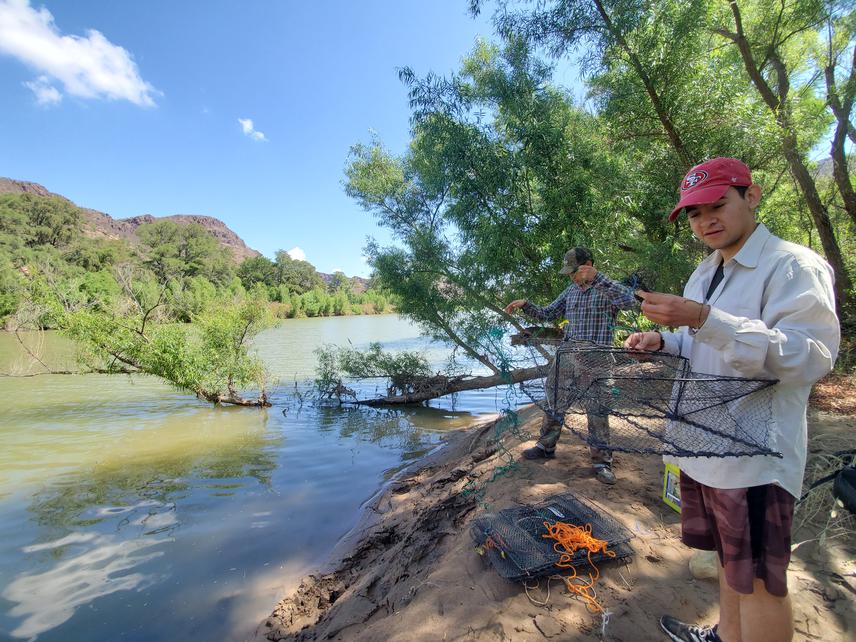Jorge Ernesto Becerra
Rivers in desert environments provide crucial ecosystem services. Globally, these ecosystems are threatened by anthropogenic changes like dam construction, water extraction, water contamination, and exotic species introduction, which can affect the genetic diversity of aquatic organisms.

Baiting traps for their placement in the middle section of the Nazas River.
Freshwater turtles, which are considered one of the most threatened vertebrates on earth, can be impacted by these anthropogenic modifications on riverine habitats. landscape genetics has facilitated unravelling the roles of anthropogenic and natural factors on genetic diversity and gene flow in wild populations. This information would be critical for conservation of aquatic environments. The project aims to identify landscape features that determine gene flow for an endangered freshwater turtle (Trachemys gaigeae) in a highly transformed riverine habitat in the North of Mexico. Also, understand the impact of riverine habitat modification on genetic diversity and differentiation.
Header: View of the upper section of the Nazas River.